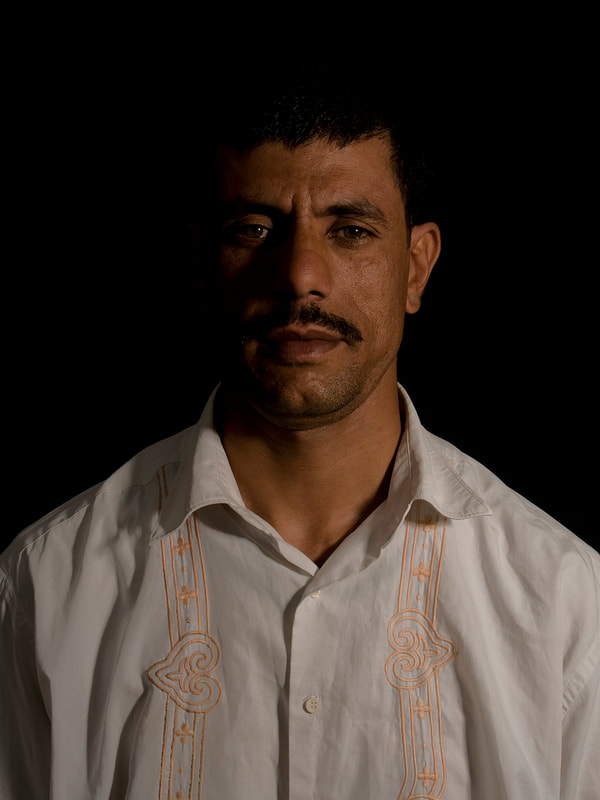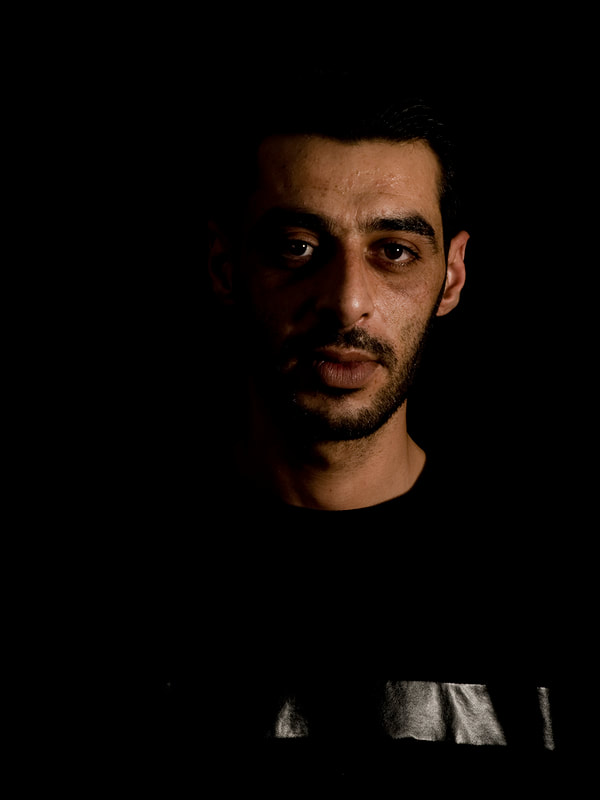spectrum
È più facile spezzare un atomo che un pregiudizio.
(Albert Einstein)
L’elaborazione dell’immagine del nemico è un processo sociale che si basa sulla paura del diverso, una diversità vissuta come incompatibile, che attinge da stereotipi negativi, e, soprattutto minacciante, perché tocca equilibri consolidati di sicurezza, potere sociale ed economico. In questo processo, gioca un ruolo fondamentale l’informazione, la cui pianificazione e gestione è sempre al centro di strategie politiche. Il principio del terrore è l’invisibilità del nemico, che innesca un sospetto generalizzato, si basa sull'idea che ogni individuo possa essere un potenziale terrorista. E' lo stesso meccanismo di alcuni film western o dell’orrore in cui il nemico rimane fuori campo, o aleggia come presagio: prima di essere introdotto alla visione, si presenta in forma di ombra, spettro, o solo se ne percepiscono rumori. Spectrum è un progetto fotografico che, a partire da queste osservazioni, da al “nemico invisibile” il volto di gente comune che non ha nulla a che fare con il terrorismo, attraverso una serie di ritratti realizzati con una luce dura che acuisce, ironicamente, la sensazione di terrore verso i soggetti. L’inquadratura ricorda un certo tipo di immagini segnaletiche e aumenta il senso del sospetto: i soggetti sono di origine mediorientale, probabilmente musulmani, possibilmente dei fondamentalisti o addirittura terroristi. Le immagini diventano uno specchio su cui si proiettano le ansie e le paure che sono state create dalle campagne mediatiche. Spectrum rivela come uno specifico canone visivo derivato da un certo tipo d’informazione e la ripetizione di un’iconografia stereotipata possa influenzare la nostra percezione e modellare un immaginario comune. Nello stesso tempo, Spectrum è un lavoro che vuole ribaltare i luoghi comuni con approccio umano e semplice, lo stesso approccio che si auspica possa prima o poi essere attuato nell'eterno triste scontro tra Oriente e Occidente.
The creation of an enemy’s image is a social process based on the fear of what is different; diversity is seen as incompatible and it stands for a negative and threatening stereotype because it touches consolidated, balanced, economic social security and power. In this creation process, information plays a fundamental role because its planification and management finds itself at the center of all political strategies. The principle of terror is known as the invisibility of the enemy, which creates the general suspicion among people that everyone may be a potential terrorist. It’s the same mechanism of some horror or western films in which the enemy is out of range and homers as an omen of evil: before being introduced to the vision, it is presented as a spectrum. Spectrum is a photographic project that, gives a common - and far from terrorism - face, to the "invisible enemy", through a series of portraits made with hard light that ironically sharpens the feeling of terror towards these subjects. The pictures remember a certain type of images that increase the sense of suspicion: the subjects are from Middle East, they are probably Muslims, if possible fundamentalist, or even terrorists. The picture becomes a mirror on which are projected the anxieties and fears that have been created by media campaigns. Spectrum reveals how a specific canon of view, derived from a certain type of information and the repetition of stereotyped iconography, can influence our perception and imagination to model a common imaginary. This photographic work wants to invert the cliché with a simple and human approach; the same approach which we hope will implement in a positive way the eternal and sad struggle between East and West.
(Albert Einstein)
L’elaborazione dell’immagine del nemico è un processo sociale che si basa sulla paura del diverso, una diversità vissuta come incompatibile, che attinge da stereotipi negativi, e, soprattutto minacciante, perché tocca equilibri consolidati di sicurezza, potere sociale ed economico. In questo processo, gioca un ruolo fondamentale l’informazione, la cui pianificazione e gestione è sempre al centro di strategie politiche. Il principio del terrore è l’invisibilità del nemico, che innesca un sospetto generalizzato, si basa sull'idea che ogni individuo possa essere un potenziale terrorista. E' lo stesso meccanismo di alcuni film western o dell’orrore in cui il nemico rimane fuori campo, o aleggia come presagio: prima di essere introdotto alla visione, si presenta in forma di ombra, spettro, o solo se ne percepiscono rumori. Spectrum è un progetto fotografico che, a partire da queste osservazioni, da al “nemico invisibile” il volto di gente comune che non ha nulla a che fare con il terrorismo, attraverso una serie di ritratti realizzati con una luce dura che acuisce, ironicamente, la sensazione di terrore verso i soggetti. L’inquadratura ricorda un certo tipo di immagini segnaletiche e aumenta il senso del sospetto: i soggetti sono di origine mediorientale, probabilmente musulmani, possibilmente dei fondamentalisti o addirittura terroristi. Le immagini diventano uno specchio su cui si proiettano le ansie e le paure che sono state create dalle campagne mediatiche. Spectrum rivela come uno specifico canone visivo derivato da un certo tipo d’informazione e la ripetizione di un’iconografia stereotipata possa influenzare la nostra percezione e modellare un immaginario comune. Nello stesso tempo, Spectrum è un lavoro che vuole ribaltare i luoghi comuni con approccio umano e semplice, lo stesso approccio che si auspica possa prima o poi essere attuato nell'eterno triste scontro tra Oriente e Occidente.
The creation of an enemy’s image is a social process based on the fear of what is different; diversity is seen as incompatible and it stands for a negative and threatening stereotype because it touches consolidated, balanced, economic social security and power. In this creation process, information plays a fundamental role because its planification and management finds itself at the center of all political strategies. The principle of terror is known as the invisibility of the enemy, which creates the general suspicion among people that everyone may be a potential terrorist. It’s the same mechanism of some horror or western films in which the enemy is out of range and homers as an omen of evil: before being introduced to the vision, it is presented as a spectrum. Spectrum is a photographic project that, gives a common - and far from terrorism - face, to the "invisible enemy", through a series of portraits made with hard light that ironically sharpens the feeling of terror towards these subjects. The pictures remember a certain type of images that increase the sense of suspicion: the subjects are from Middle East, they are probably Muslims, if possible fundamentalist, or even terrorists. The picture becomes a mirror on which are projected the anxieties and fears that have been created by media campaigns. Spectrum reveals how a specific canon of view, derived from a certain type of information and the repetition of stereotyped iconography, can influence our perception and imagination to model a common imaginary. This photographic work wants to invert the cliché with a simple and human approach; the same approach which we hope will implement in a positive way the eternal and sad struggle between East and West.
Spectrum, fine art giclée inkjet print on Photo Rag cotton paper, 60x80 cm, 2011










